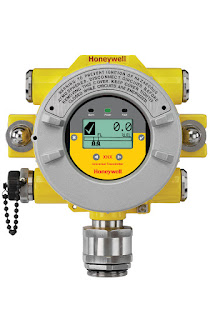ProComSol is the creator of the innovative
DEVCOM 2000 SMART device communicator, a breakthrough that converts an ordinary laptop PC into a full-featured HART communicator. With the DEVCOM 2000 software and a HART modem you can configure transmitters and control valves on the bench or in the field quickly, easily and economically.
For unprecedented levels of convenience, efficiency, and safety, the DEVCOM 2000 system is also available with Bluetooth capability for communication with field devices. This can be handy for devices installed in unsafe or difficult to reach locations. ProComSol, which stands for "PROcess COMmunication SOLutions", is the leading provider of field-proven HART communication solutions for industrial applications, and was the first to deploy Bluetooth technology to configure and troubleshoot transmitters and control valves.

ProComSol developed the DEVCOM 2000 software on the PC platform because it offers the
advantages of a powerful and flexible, yet familiar and intuitive, tool to meet many of your industrial automation needs. For example, the PC can effectively store and present configuration tools user manuals, operating procedures, reports, and a host of other tools. Configurations can be saved as PDF files in order to keep a record of all up-to-date configurations of your devices. The PC makes it easy to integrate HART information into your reports and emails. This not only gives you the potential for system-wide productivity increases, but also eliminates the need to purchase and maintain a separate handheld HART communicator.
The DEVCOM 2000 software has been tested and proven by more than a thousand users in many industries including oil and gas refining, chemical and petrochemical, power generation, water and wastewater, pharmaceuticals, pulp and paper, mining and metals, and food and beverage. Quality is an integral part of the design, development, and production of ProComSol products. Their quality management system has been certified to ISO 9001.
Last, but not least, unlike handheld HART communicators that typically cost between $4000 and $7000 dollars, the DEVCOM 2000 system costs approximately $1000 and can be easily and economically upgraded to include additional functions as they become available. Each DEVCOM 2000 comes complete with warranty and free software upgrades during the first year of ownership.
The DEVCOM 2000 Windows Explorer interface is intuitive and easy to use. Menus's are clearly available, as are the variables list. Because it's on the computer screen, the menu structure can be expanded or contracted as required so there is no need to dig through small device menus to perform a task. With the full keyboard available, data entry is also easy. The computer screen continuously displays the variables, with items in bold being editable and items in grey being read-only. Edited variables are shaded in yellow, which means the variable has been edited but not yet committed to the device. After clicking on the send icon, the yellow shading goes away and the variable has been changed in the device. It's that simple.
HART Protocol's popularity is partially based on the ability to "get data out of the field device" through a data file called a Device Description (DD). The DEVCOM 2000 includes a list of DD's in the DEVCOM 2000 software. The DEVCOM 2000 uses the compiled device description binary file the DD developed by the device manufacturer and registered with the HART Communication Foundation. Each DD has been tested by the device manufacturer. This is an important point because we know that every DD will work with the device be it a transmitter or control valve. The Windows Explorer interface enables other DD's to be easily added in the field. In fact, because it's so easy to add DD's in the field, many device manufacturers are using DEVCOM 2000 to test new DDS that they are currently developing. The DD library is updated and published four times per year by the HART Communication Foundation and new DEVCOM 2000 updates are available shortly after. Updates can be downloaded for free from the ProComSol website during the one-year warranty period, and in subsequent years by paying a nominal library subscription fee.
For more about DEVCOM 2000 or any ProComSol product, contact
Hile Controls of Alabama. They can be reached by
phone at 800-536-0269 or by visiting
https://hilealabama.com.



